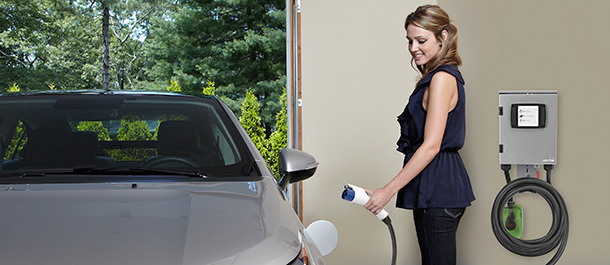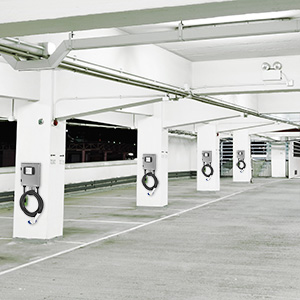The Next Step for Electric Vehicle Charging Stations

The next generation of residential electric vehicle supply equipment (EVSE) will likely have the option for an embedded meter within it.
There are multiple requirements driving the need for the embedded meter EVSE:
- Utilities across the country would like to incentivize vehicle charging so the consumers are charging during off-peak hours. One of the best methods for monitoring consumer charging habits is to directly monitor the electric vehicle (EV) charging time and power consumption.
- The cost of adding an EVSE-embedded meter is low relative to the infrastructure costs required to add a separate standard residential watt-hour submeter.
- EV users would like to know how much they’re paying to charge their vehicles and where in residential and in public locations they are likely to purchase electric energy. Regulators want to ensure that the dispensed quantity is accurately measured and then communicated to the consumer.
NEMA’s Electric Vehicle Supply Equipment Section (5EV) has convened a working group to develop a “Guide for EVSE Embedded Metering and Communication”. The basic premise is that using an existing residential watt-hour meter for EVSE would be prohibitively expensive. An EVSE-embedded meter would offer manufacturers the opportunity to satisfy regulatory requirements and at the same time minimize the overall cost of installing this function.
The working group, which has been developing the guide for almost a year, the group consists of section members and representatives from the Submetering Section (8E1), which is interested in this new market segment. The guide will point to specific codes and standards already in place that determine the requirements for meter accuracy and communication protocols. The guide will also identify gaps in existing standards for EVSE that need to be addressed and the group will determine how to best fill these gaps.
The stakeholders expected to benefit from this document are EVSE manufacturers, utilities, automakers, smart meter manufacturers, EV drivers, EVSE owners, and regulators. The technical work is complimented by the Embedded Meter Business Policy Committee, which supports NEMA members’ interests in developing commercial billing standards with the National Institute of Standards and Technology, the National Conference on Weights and Measures, and progressive utilities such as the California Public Utilities Commission.
The PEV (plugin electric vehicle) owner is typically billed by the utility for delivery of electric energy to the residence at a specified rate. The cost for energy consumption could be at a flat rate, tiered rate, time of use (TOU), or variations thereof. In another embedded-metered scenario, the PEV owner could charge at an alternate residential address (e.g., a relative or friend’s house) and have the specific cost delivered to the PEV owner’s home bill. In commercial and industrial areas where a public utility could have implemented either an intra- or intercompany billing method, the registration process could allow for billing credits to be processed. If the PEV owner were to charge at work, for example, the registration process would associate this as the work service address for the PEV. If the owner were to charge at a public location (e.g., retail shopping, restaurant, or parking garage), the registration process could associate these locations as public addresses for the PEV.

Conclusion
There is a validated need to add an embedded meter to EVSE. Utilities and power generators would like to incentivize consumers to charge vehicles during non-peak hours. Enticing EV drivers to charge at non-peak hours will reduce the power grid infrastructure cost and improve power delivery efficiency.
The embedded meter will save installation cost relative to a completely external residential watt-hour submeter, which would require additional costs. EV users want to know how much they’re paying to charge their vehicles and where they are likely to purchase electric energy.
There is considerable work in progress at NEMA to ensure that consistent standards are in place to assist with the process of providing an EVSE-embedded meter. The NEMA working group is identifying gaps in existing standards related to adding an embedded meter and the communication required to make the meter installation useful. Following the release of the “Guide for EVSE Embedded Metering and Communication”, a new standard from NEMA could be on the roadmap to success.


